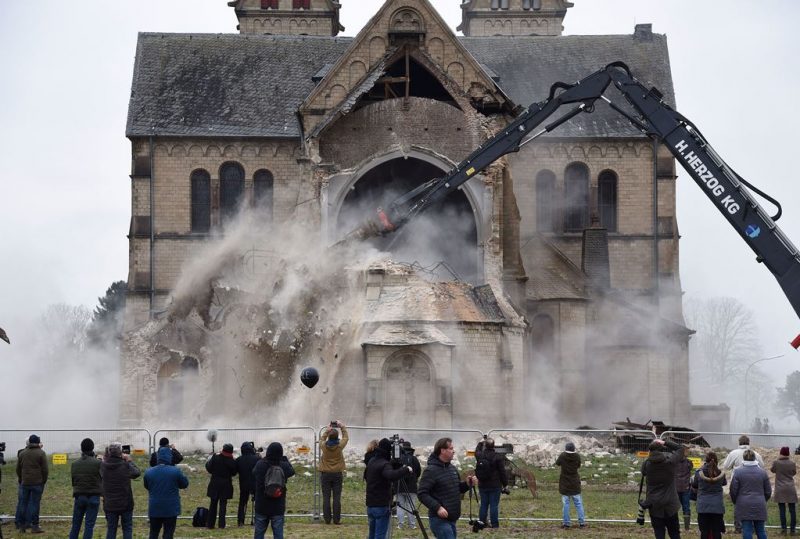In November of last year, diplomats, government leaders, and environmentalists from all over the world gathered in the former West German capital of Bonn to take part in the latest UN climate change convention. As always, environmental issues were placed on the table, and additionally, proposals on how to implement the Paris climate accord. But, ironically enough, in the shadow of Bonn’s climate change convention, a once-quaint farming village, located about an hour’s drive from the headquarters of the United Nations Framework Convention on Climate Change Secretariat in Bonn, was being demolished to make room for, believed or not, coal mining.
Residents of the village were moved out, their dead were been dug up and relocated to a new cemetery, their houses were being demolished, and according to recent reports, the double-spired 19th-century village church was demolished as it sits on a land rich with the valuable, but environmentally questionable, substance: coal.
Famous for two towers and for its impressive neo-Romanesque design, St. Lambertus church is thought to have been built around 130 years ago, sometime between 1880 and 1890. But despite its indisputable beauty and historical significance, RWE Power, one of Germany’s leading enterprises in energy production and financier of the entire demolition operation of the village of Erkelenz-Immerath, has torn the church down.
Greenpeace activists protested the demolition of the church, with some even chaining themselves to the facade of St. Lambertus, only to be removed by the police. It took two days to destroy the once impressive neo-Romanesque church, whose construction took nearly three years. The last Mass in the church was held in October 2013. It was soon de-consecrated and sold to RWE Power, according to Die Zeit.
Immerath is not the only place in the Erkelenz region that is about to be permanently wiped from the map. Many other villages share the same fate, having been doomed ever since 1997, when the mine expansion was approved. People organized serious anti-fossil fuel protests throughout the country and many of them tried to bring their cases to the German courts, but there was nothing they could do when Germany’s top court ruled that RWE Power could freely continue with the expansion of the coal mine at the expense of the relocation of the villages as there was an overwhelming public interest in it and was of great significance to the national power system.
RWE Power has built a new village, Immerath-Neu (New Immerath), seven miles away from the one they have demolished. The company built a new hospital, school, and kindergarten there, and resettled Immerath’s approximately 900 residents. A new chapel has also been constructed in Immerath-Neu by RWE Power and a miniature replica of the demolished church, which was fondly known as a cathedral, “Immerather Dom,” by residents due to its impressive size and appearance, has been placed near the center of Immerath-Neu.
What they could not construct was the irresistible, centuries-old charm of the old village that will sadly be missed by the families who spent most of their lives there.
RWE’s ambitious expansion plans, which include an increase in their access to the supplies of lignite in the area, don’t just mean a simple resettling of people and wiping villages from the map. “Lignite, also called brown coal, is the dirtiest of all fossil fuels with relation to carbon dioxide emissions,” Deutsche Welle reports. Germany still gets 40 percent of its energy from coal, which compared to the 25 percent on average in Europe is quite a lot.
A story in the Huffington Post says: “Some critics fear that phasing out coal too quickly would disrupt the country’s economy and lead to major job losses.” But this does bring some to a logical question of whether Germany deserves its reputation as a leader on climate change.
